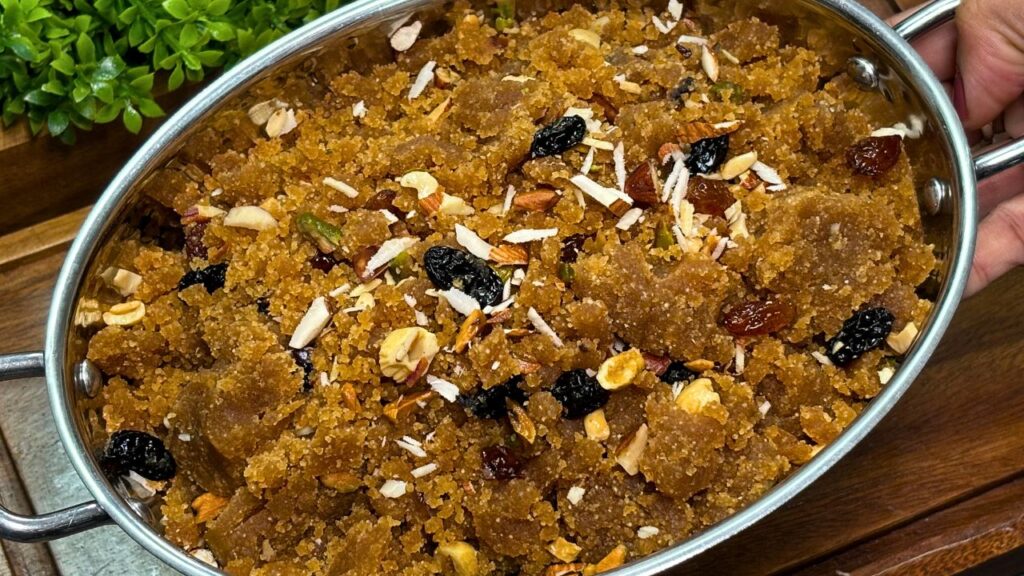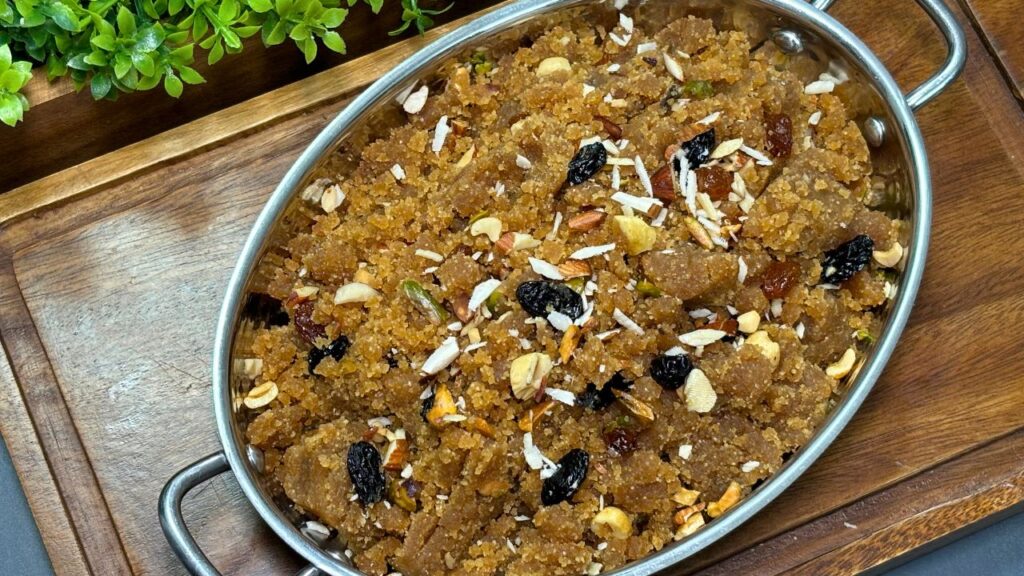



Moong Dal Halwa is a rich and aromatic Indian dessert that holds a special place in festive celebrations and special occasions. This classic halwa recipe combines the earthy flavors of roasted moong dal with the richness of ghee and milk, making it an indulgent treat. Known for its delightful texture and mouthwatering taste, this sweet recipe is a popular choice during weddings, festivals, and family gatherings. Its velvety consistency and nutty flavor make it a standout among other Indian desserts.

Preparing this dessert may seem time-consuming, but it is surprisingly simple with a little patience and effort. This recipe is a must-try for those looking for easy desserts that impress guests. The use of roasted moong dal provides a distinct aroma and flavor, while ghee adds a luxurious touch. Adding milk and sugar ensures the perfect balance of sweetness and richness. Whether served warm during winter evenings or as a festive sweet, this dessert never fails to captivate taste buds.
This recipe is not just a dessert; it is an experience that brings warmth and nostalgia. The process of slow-roasting the dal, blending it with rich ghee, and incorporating milk and sugar creates a luscious, melt-in-the-mouth texture. Its nutty aroma and slightly caramelized flavor make it irresistible. The crunchy dry fruits and the hint of rose essence add elegance and depth, making it a feast for both the eyes and the palate.
This dessert is often prepared during festivals like Diwali and Holi, where sweets symbolize prosperity and joy. Its preparation may take some time, but the end result is well worth the effort. Each spoonful delivers comfort and luxury, perfect for serving guests or enjoying with family. Moong Dal Halwa has become synonymous with celebrations, bringing people together over shared love for sweets and desserts.
What makes this halwa recipe unique is its versatility. While it is traditionally prepared with ghee, sugar, and milk, variations can include jaggery for a healthier twist or coconut milk for a dairy-free option. Adding cardamom or saffron can further enhance its flavor, giving it an exotic touch. Whether you prefer it rich or mildly sweet, this recipe can be customized to suit every palate.
In Indian households, sweet recipes often carry cultural significance, and this dessert is no exception. Passed down through generations, this dessert symbolizes celebration, prosperity, and togetherness. It is commonly served during weddings and religious ceremonies, where sweets mark auspicious beginnings. Its preparation involves dedication and love, making it a cherished family tradition.
Modern variations of this traditional halwa have gained popularity, especially among health-conscious individuals. By reducing the amount of ghee and sugar, or substituting them with healthier alternatives, it is possible to enjoy this treat guilt-free. Yet, the essence of Moong Dal Halwa remains unchanged—an indulgent, flavorful dessert that satisfies cravings and creates lasting memories.
Moong Dal Halwa is also an excellent option for those who enjoy experimenting with sweets. It pairs well with ice cream or whipped cream, adding a contemporary twist to its traditional roots. Serving it in individual dessert cups or as bite-sized portions makes it suitable for parties and gatherings, showcasing creativity while retaining its authentic taste.
From its preparation to its presentation, Moong Dal Halwa reflects the artistry of Indian cooking. Its golden hue, aromatic richness, and delicate balance of flavors make it a showstopper at any event. Whether enjoyed during winter for its warmth or as a festive delicacy, this dessert continues to win hearts and delight taste buds.

In conclusion, Moong Dal Halwa is more than just an Indian dessert—it is a celebration of flavors, textures, and traditions. Its appeal lies in its ability to bring comfort and joy, making it a staple in Indian kitchens. Whether you're looking for easy desserts to impress your guests or a sweet recipe to add to your festive menu, Moong Dal Halwa is the perfect choice. With its irresistible taste and timeless charm, it promises to be a favorite for generations to come.